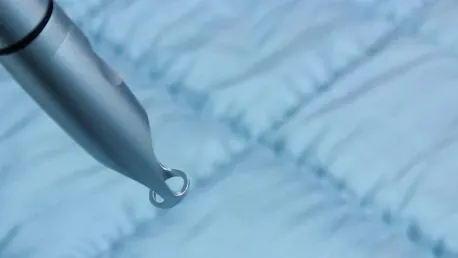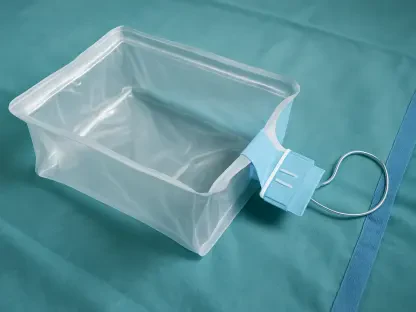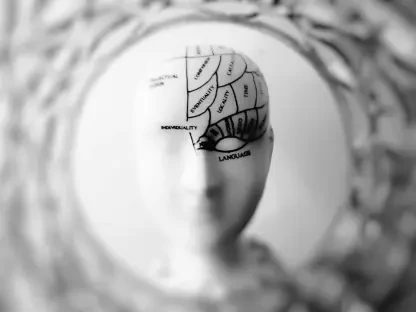The dermatology devices market is experiencing rapid growth, driven by technological advancements, increasing demand for advanced skin treatments, and rising awareness about skin health. This article provides a comprehensive analysis of the market, highlighting its current valuation, projected growth, key product types, primary uses, market trends, competitive landscape, and future outlook.
Market Overview
The Global Dermatology Devices Market is currently valued at USD 7.25 billion as of 2023 and is projected to reach USD 18.6 billion by 2032, growing at a compound annual growth rate (CAGR) of 12.5% between 2024 and 2032. This rapid growth can be attributed to increasing awareness about skin health, the prevalence of skin disorders, and the rising demand for aesthetic procedures. Continuous advancements in technology are also playing a significant role in driving the market forward, allowing for more effective and safer treatments.
Several factors are contributing to the market’s expansion, such as the growing incidences of skin cancer and other dermatological conditions, which have heightened the need for diagnostic and therapeutic devices. Moreover, the aging population is more inclined towards maintaining skin health and appearance, further escalating the need for dermatology devices. As technological innovations continue to advance, the market is expected to witness substantial growth, presenting numerous opportunities for both established companies and new entrants.
Product Types and Key Characteristics
Lasers and Light-based Devices
Lasers and light-based devices are the most common dermatology tools used for various procedures such as hair removal, tattoo removal, skin resurfacing, and acne treatment. These devices utilize focused beams of light to treat skin imperfections and rejuvenate skin cells. The advancements in laser technology have led to the development of more precise and safer devices, enhancing their effectiveness and reducing recovery times. Innovations such as fractional lasers and intense pulsed light (IPL) systems have revolutionized the way dermatologists approach skin treatments, providing better results with fewer side effects.
The demand for lasers and light-based devices continues to rise as they offer minimally invasive solutions with quick recovery periods. These devices are now equipped with advanced features like cooling systems and adjustable wavelengths to cater to different skin types and conditions. Their popularity is not only limited to clinical settings but also extends to home-use devices, making them accessible to a broader audience. As research continues to evolve, we can expect even more advancements in this segment, further driving the growth of the dermatology devices market.
Microdermabrasion Devices
Microdermabrasion devices exfoliate the skin by removing the topmost layer of dead skin cells, making them popular for treating skin aging, scarring, and discoloration. These devices are non-invasive, making them a preferred choice for individuals seeking minimal downtime and quick results. The technology behind microdermabrasion has evolved over the years, with newer devices offering more precise control and enhanced safety features. These improvements have made microdermabrasion a staple in both clinical and at-home skincare routines.
Microdermabrasion devices continue to gain traction due to their ability to provide immediate results with little to no discomfort. The procedure is relatively quick, typically taking less than an hour, and can be performed on various parts of the body, including the face, neck, chest, and hands. As consumers become more informed about the benefits of regular exfoliation and skin rejuvenation, the demand for these devices is expected to grow. Companies are also investing in research and development to introduce more advanced microdermabrasion systems that offer better results and user experience.
Diagnostic Devices
Diagnostic devices in dermatology include high-tech tools that often integrate artificial intelligence (AI) to provide more accurate diagnoses of skin conditions. These devices are essential for identifying moles, lesions, and other abnormalities, enabling early detection and treatment of skin disorders. The integration of AI and machine learning algorithms has significantly enhanced the diagnostic capabilities of these devices, allowing for more precise and quicker assessments. This technological leap is particularly important for conditions like skin cancer, where early detection can drastically improve treatment outcomes.
The popularity of diagnostic devices is growing as healthcare providers seek to improve accuracy and efficiency in diagnosing skin conditions. Dermatoscopes, skin imaging systems, and digital analysis tools are becoming standard in modern dermatology practices. These devices not only aid in diagnosis but also help in monitoring the progress of treatments, ensuring better patient care. As AI technology continues to advance, we can expect even more sophisticated diagnostic devices that can offer personalized recommendations and treatment plans.
Cryotherapy Devices
Cryotherapy devices apply extreme cold to remove warts, precancerous cells, and other skin imperfections. These devices are widely used in dermatology due to their effectiveness and minimal invasiveness. Cryotherapy is a quick procedure with minimal discomfort, making it a popular choice for patients. The technology behind cryotherapy has evolved, with modern devices offering better control over temperature and application, resulting in more precise treatments with fewer side effects.
Cryotherapy’s appeal lies in its ability to deliver immediate results with minimal recovery time. The procedure is often performed in outpatient settings, requiring no anesthesia and taking only a few minutes. This convenience, combined with its effectiveness, has made cryotherapy a staple in dermatology practices worldwide. As more dermatologists and patients recognize its benefits, the demand for cryotherapy devices is expected to grow. Manufacturers are also focusing on developing portable and user-friendly devices to cater to the increasing trend of at-home treatments.
Other Devices
Other dermatology devices encompass tools used for phototherapy, chemical peels, and radiofrequency-based treatments. These devices offer various benefits, including improved skin texture, reduced signs of aging, and treatment of specific skin conditions. Phototherapy devices use light to treat conditions like psoriasis and vitiligo, while chemical peels involve applying a chemical solution to exfoliate and rejuvenate the skin. Radiofrequency-based devices use energy to heat the deeper layers of the skin, stimulating collagen production and improving skin elasticity.
Each of these devices has its unique advantages and applications, making them essential components of modern dermatology practices. Phototherapy is known for its effectiveness in treating chronic skin conditions without significant side effects. Chemical peels and radiofrequency-based treatments are popular for their ability to provide noticeable improvements in skin appearance with minimal downtime. As people continue to seek advanced and diverse skin treatments, the market for these devices is expected to expand. Continuous innovation and research in this field will likely bring forth even more effective and safer devices.
Primary Uses of Dermatology Devices
Dermatology devices are primarily used for diagnosing and treating various skin conditions, performing cosmetic procedures, and monitoring the effectiveness of treatments. Advances in technology have led to the development of sophisticated tools that enhance accuracy and patient outcomes. These devices play a crucial role in improving dermatological healthcare and aesthetic practices.
Aesthetic Treatments
Dermatology devices play a crucial role in aesthetic treatments aimed at improving the appearance of the skin. These treatments include reducing wrinkles, scars, hyperpigmentation, and acne. The demand for aesthetic procedures is rising as individuals seek to enhance their appearance and boost their confidence. In a visual-driven society, the importance of maintaining a youthful and vibrant appearance has become paramount, leading to increased interest in aesthetic dermatology.
Aesthetic treatments using dermatology devices are not just limited to improving looks but also enhance overall skin health. Non-invasive procedures such as laser treatments, microdermabrasion, and radiofrequency therapies offer significant benefits without the need for lengthy recovery times. These treatments have become more accessible to a broader audience, thanks to advancements in technology and the development of home-use devices. As a result, the aesthetic dermatology segment is expected to witness substantial growth in the coming years.
Medical Dermatology
Medical dermatology focuses on the diagnosis and treatment of skin conditions and diseases. From common issues such as acne and eczema to more serious conditions like skin cancer, medical dermatologists are equipped to handle a wide range of skin-related health problems. They also provide guidance on maintaining healthy skin, preventing skin diseases, and managing chronic skin conditions.
Medical dermatology involves diagnosing and treating skin conditions such as psoriasis, eczema, and skin cancer. Dermatology devices are essential tools for healthcare professionals in providing accurate diagnoses and effective treatments for these conditions. The rise in skin disorders and the growing awareness about the importance of early diagnosis and treatment are major factors driving the demand for medical dermatology devices.
In medical dermatology, devices like dermatoscopes, skin imaging systems, and AI-powered diagnostic tools have revolutionized the way skin conditions are identified and managed. These devices enable dermatologists to detect issues at an early stage, improving the chances of successful treatment outcomes. Moreover, the introduction of advanced therapeutic devices has enhanced the effectiveness of treatments for chronic skin conditions. The increased focus on research and development in this area is expected to bring forth even more innovative solutions, further propelling the market’s growth.
Cosmetic Dermatology
In the realm of cosmetic dermatology, the focus lies on enhancing the appearance of the skin through various procedures and treatments. These can range from non-invasive techniques like laser therapy and chemical peels to more invasive methods such as Botox injections and dermal fillers. The goal is to address common skin concerns such as wrinkles, acne scars, hyperpigmentation, and other signs of aging, ultimately improving the aesthetic appeal and boosting self-confidence of individuals.
Cosmetic dermatology procedures, such as laser hair removal, skin resurfacing, and tattoo removal, are gaining popularity. These procedures offer long-lasting results and minimal downtime, making them attractive options for individuals seeking cosmetic enhancements. The advancements in technology have made these procedures safer, more effective, and accessible to a wider range of consumers.
Cosmetic dermatology has seen significant growth due to the rising interest in maintaining a youthful appearance and the desire to address various skin imperfections. Devices used in these procedures have become more sophisticated, offering better results with fewer side effects. The demand for non-invasive and minimally invasive cosmetic treatments is increasing, driven by the growing awareness of their benefits and the desire for quick and effective results. As technology continues to advance, the cosmetic dermatology segment is expected to witness robust growth, attracting more consumers seeking aesthetic enhancements.
Preventive Dermatology
Preventive dermatology focuses on the early detection of skin cancers and lesions using diagnostic tools. Early detection is crucial for successful treatment outcomes, and dermatology devices play a vital role in identifying potential issues before they become severe. The importance of preventive dermatology has grown significantly, with more people recognizing the need for regular skin check-ups and screenings.
Preventive dermatology devices, such as dermatoscopes and imaging systems, have become standard tools in dermatology practices. These devices allow for comprehensive skin examinations, enabling dermatologists to identify suspicious lesions and moles that may indicate skin cancer or other conditions. By facilitating early detection, these devices help in reducing the morbidity and mortality associated with skin diseases. The increasing focus on preventive healthcare and the rising awareness about skin cancer are expected to drive the demand for diagnostic devices, contributing to the overall growth of the dermatology devices market.
Key Market Trends
Technological Advancements
Technological innovation is a major driver in the dermatology devices market. The integration of AI and machine learning in diagnostic devices is enabling faster and more precise diagnoses of skin conditions. Minimally invasive procedures are becoming more common with technologies like radiofrequency (RF) devices, focused ultrasound, and light therapies allowing for non-invasive treatments with minimal downtime. These advancements are not only improving the accuracy and effectiveness of dermatology treatments but also enhancing the patient experience by reducing recovery times and associated risks.
The continuous development of smart devices and wearable technology is also transforming the dermatology landscape. Devices equipped with sensors and connected to mobile apps are providing real-time data and personalized skincare recommendations. This digital revolution is making advanced dermatology treatments more accessible to consumers, empowering them to take charge of their skin health. As technology continues to evolve, we can expect even more groundbreaking innovations that will further propel the growth of the dermatology devices market.
Sustainability in Dermatology Devices
As consumers become more environmentally conscious, the demand for sustainable dermatology devices is rising. Manufacturers are focusing on eco-friendly products, using fewer chemicals, energy-efficient components, and recyclable materials. Regulatory bodies are also tightening standards related to electronic waste disposal and materials used in medical devices, encouraging sustainable manufacturing practices. This shift towards sustainability is not only beneficial for the environment but also aligns with the values of the modern consumer, driving the adoption of eco-friendly dermatology devices.
The push for sustainability is prompting companies to innovate and develop products that reduce their environmental footprint. This includes designing devices that consume less energy, have longer lifespans, and are easier to recycle. The trend towards sustainability is also influencing packaging, with companies opting for biodegradable or reusable materials. As the awareness of environmental issues continues to grow, the demand for sustainable dermatology devices is expected to increase, creating new opportunities for manufacturers to differentiate themselves in the market.
Shifts in Consumer Behavior
There is an increasing trend towards at-home dermatology devices, with products like LED light therapy masks, skin rejuvenation tools, and microdermabrasion kits gaining popularity. Consumers are also seeking personalized skincare treatments, leading to the development of devices tailored to individual skin types and concerns. This shift in consumer behavior is driven by the desire for convenience, cost savings, and the ability to manage skincare routines from the comfort of home.
The rise of e-commerce and online platforms has made it easier for consumers to access a wide range of dermatology devices and gain information about their benefits and usage. Social media influencers and beauty bloggers are also playing a significant role in popularizing these products, showcasing their effectiveness and ease of use. As consumers become more knowledgeable and confident in using at-home devices, the demand for personalized and user-friendly dermatology solutions is expected to grow. This trend is likely to drive further innovation and diversification in the market, catering to the evolving needs and preferences of consumers.
Competitive Landscape
Major Players
The dermatology devices market is characterized by a competitive landscape with several major players, including AbbVie Inc. (which acquired Allergan), Lumenis Ltd., Syneron Candela, Fotona, and Solta Medical (a division of Valeant Pharmaceuticals). These companies are recognized for their innovative products and strong market presence. They continuously invest in research and development to introduce cutting-edge solutions and stay ahead of the competition.
Each of these major players has a unique approach to the market, focusing on different aspects of dermatology devices. AbbVie Inc. (acquired Allergan) is known for its aesthetic dermatology devices, including CoolSculpting technology for body contouring. Lumenis Ltd. specializes in laser-based dermatology devices, offering solutions for skin resurfacing, hair removal, and acne treatments. Syneron Candela manufactures devices for laser hair removal, skin rejuvenation, and tattoo removal. Fotona is renowned for its Nd:YAG and Er:YAG lasers used in various dermatological applications. Solta Medical, a division of Valeant Pharmaceuticals, offers advanced skin resurfacing and aesthetic dermatology devices like Fraxel and Thermage.
Strategic Initiatives
Major players in the market are continuously investing in research and development to introduce innovative products and maintain their competitive edge. These companies engage in various strategic initiatives, such as partnerships, mergers, acquisitions, and product innovations. For instance, collaborations with research institutions and technology firms allow for the integration of advanced technologies into dermatology devices, enhancing their functionality and effectiveness.
Acquisitions and mergers are also common strategies among major players, enabling them to expand their product portfolios and enter new markets. These strategic moves help companies strengthen their market positions and increase their customer base. In addition, major players often focus on enhancing their global presence through strategic alliances and distribution agreements. By leveraging these initiatives, companies can better address the evolving needs of consumers and capitalize on emerging opportunities in the dermatology devices market.
Conclusion and Future Outlook
In summary, the SEC’s careful and methodical approach to cryptocurrency regulation, particularly regarding Ethereum and Bitcoin, underscores the complexity and importance of integrating digital assets into existing financial frameworks. As the SEC continues to seek public input and thoroughly evaluate each case, the future of cryptocurrency ETFs remains uncertain yet promising. The decisions made in the coming months will undoubtedly shape the landscape of digital asset investment and regulation.
The dermatology devices market is growing rapidly, propelled by technological advancements, increased demand for sophisticated skin treatments, and greater awareness of skin health. Driven by these factors, the market is poised for expansion. This article delivers an in-depth review of the dermatology devices market, featuring its current valuation and forecasted growth.
Notably, the article delves into key product types such as lasers, light therapy devices, and diagnostic equipment that are pivotal in the industry. Furthermore, the primary uses of these devices in treating conditions such as acne, psoriasis, and skin cancer are explored, showing the critical role these tools play in improving skin health.
Additionally, the piece examines current market trends like the rise in minimally invasive cosmetic procedures and the growing preference for home-use dermatology devices. The competitive landscape is also analyzed, identifying major players, emerging companies, and the strategic moves they are making, such as mergers and acquisitions, to stay ahead in the market.
Finally, the future outlook of the dermatology devices market is discussed, considering factors like technological innovations and regulatory changes that could shape its trajectory. Overall, this article offers a detailed perspective on the dynamics of the dermatology devices market, making it a valuable resource for stakeholders and professionals in the field.









